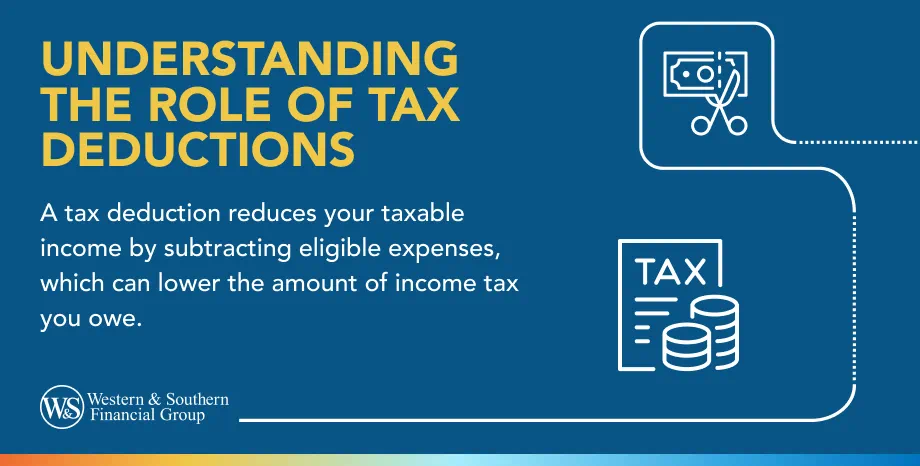

Table of Contents
Key Takeaways
- A tax deduction reduces your taxable income, lowering the amount of tax you owe. It's essentially a subtraction from your total income.
- Common tax deductions include charitable contributions, mortgage interest, state/local taxes, and medical expenses exceeding 7.5% of AGI.
- Deductions reduce your taxable income but don't affect your marginal tax rate. The higher your income, the more valuable deductions are.
- The standard deduction increased under the Tax Cuts and Jobs Act, so fewer taxpayers now itemize deductions.
- Look at your prior year tax return to estimate if you'll exceed the standard deduction with itemized deductions for the current year.
Tax deductions can be a great way to save money when filing season comes around. But you may not have a clear idea how they really work, especially if someone else prepares your tax returns for you. Maybe you've never itemized your deductions because you didn't know whether you'd save more than by just taking the standard deduction. Wherever you rank in deduction experience, it's important to examine the fundamentals.
What Is a Tax Deduction?
A simple way to think about tax deductions is to substitute another word with the same basic meaning: subtraction. A tax deduction is an amount of money you subtract from the gross (total) income you report on your tax return. The income tax you owe is calculated based on the smaller amount and that smaller amount is your adjusted gross income (AGI).
Example
- Suppose your gross income last year was $75,000, and you spent a total of $3,000 in tax-deductible expenditures.
- You would deduct that $3,000 from your $75,000 in income.
- Your tax bill would then be calculated based on $72,000, your adjusted gross income, rather than the full $75,000.
How Deductions Are Used
Your reduced taxable income does not affect your marginal tax rate. In other words, if your adjusted gross income falls within the range of a lower tax bracket than your original gross income, you'd still pay the percentage corresponding to the original income. The higher your income, the more valuable deductions can be.
The basic categories of deductible expenses are:
- Charitable contributions
- State and local income and property taxes
- Home mortgage interest
- Any medical and dental expenses that exceed 7.5% of your AGI
The ability to take, and the amount of, any deductions is subject to federal, state, and tax rules and regulations. If you run your own unincorporated or subchapter S corporation business on the side or as a full-time job, you may also be able to deduct your business expenses.
Examples of downward adjustments to your total income include individual retirement account (IRA) contributions, health savings account contributions, some educational tuition fees and student loan interest.
What Modified Adjusted Gross Income Means
There's another type of income calculation used for other tax calculation purposes. This is called modified adjusted gross income, or MAGI.
- Your MAGI number starts with the adjusted gross income figure
- Adds back some of the deductions taken
- Plus some other items like foreign income (if you have any)
The MAGI number is used on your 1040 form to determine how much of an IRA deduction you can take.
Thinking About Your Deduction(s)
What's important about the tax cuts that took effect in early 2018 under the Tax Cuts and Jobs Act (TCJA) is that they were supposed to not only reduce many people's taxes, but simplify the calculation process.1
One way this law tries to kill two birds with one stone is by increasing the "standard deduction" you can take if you don't want to itemize all your deductions, or if the standard deduction is actually higher than the amount you'd have if you'd itemized. The TCJA limits the amount of certain deductions you can take on home mortgage interest and combined state and local income and property taxes.
Will you claim a lot of itemized tax deductions when filing your 2024 returns? Time will tell, but a quick review of your 2023 tax return might help, particularly if your total deductions fell well below the higher standard deduction amounts. A little knowledge — and perhaps some help from a tax advisor — might better prepare you to make your potential savings work toward your financial goals.
Sources
- Tax Cuts and Jobs Act: A comparison for businesses. https://www.irs.gov/newsroom/tax-cuts-and-jobs-act-a-comparison-for-businesses.















